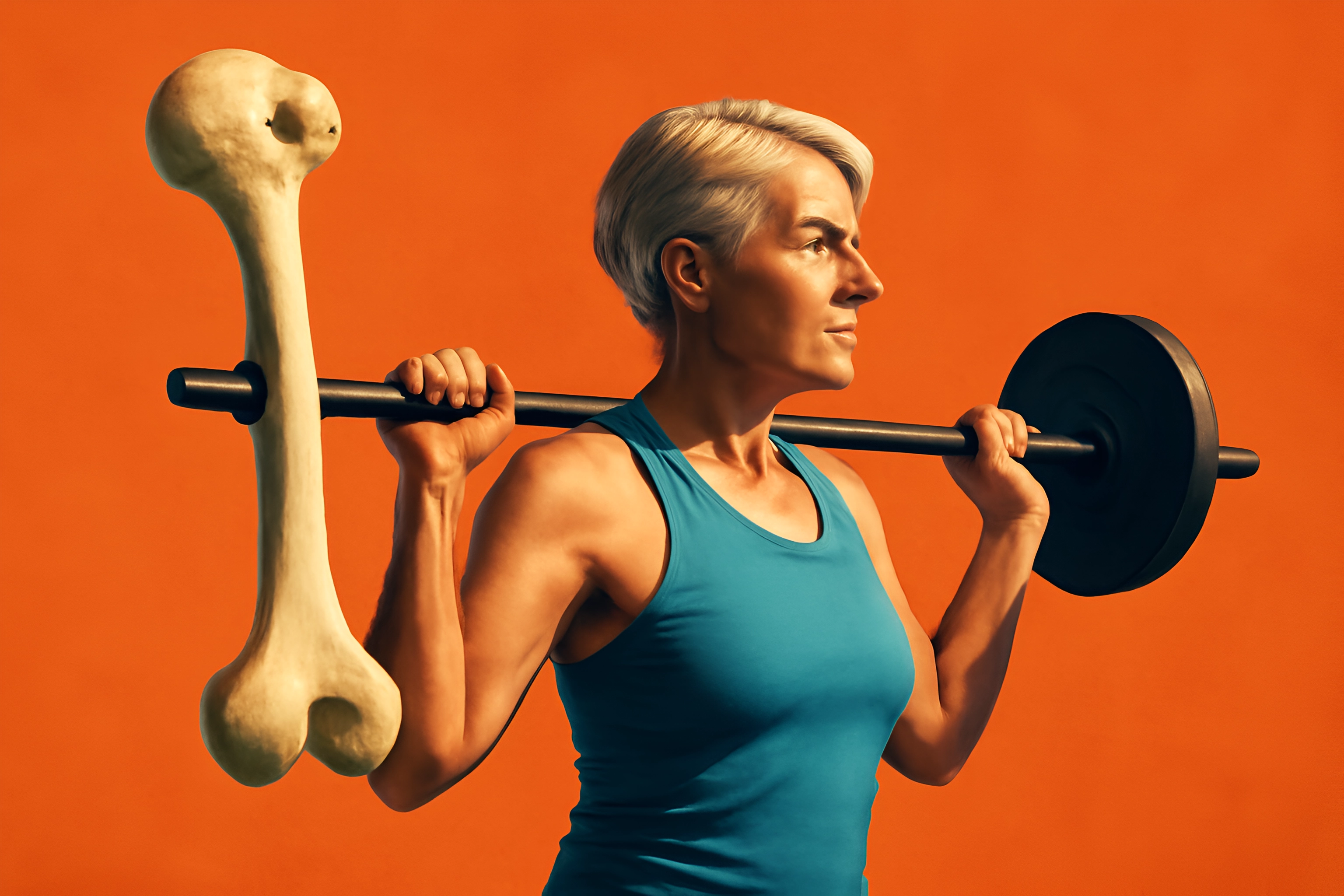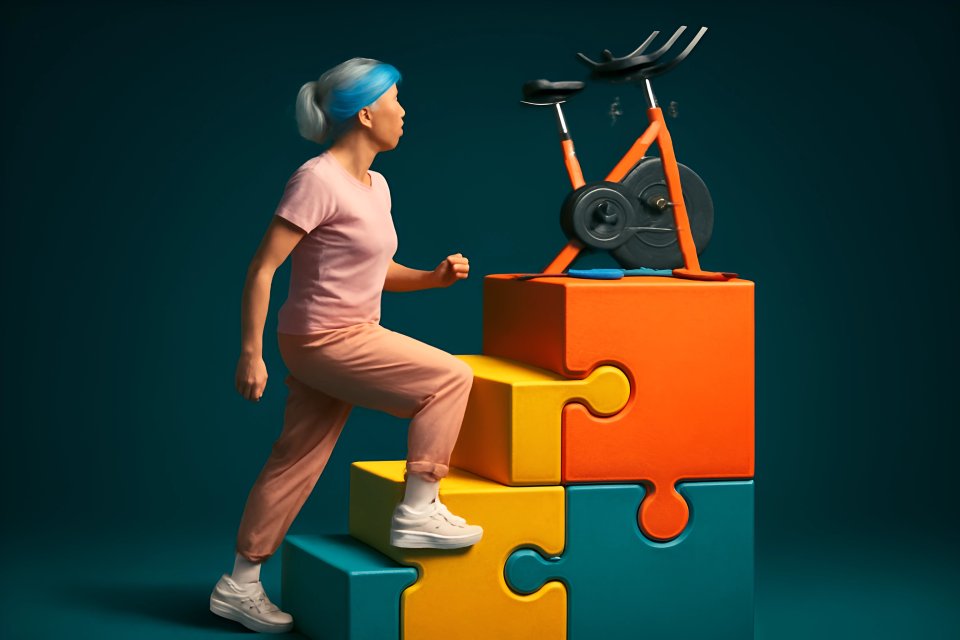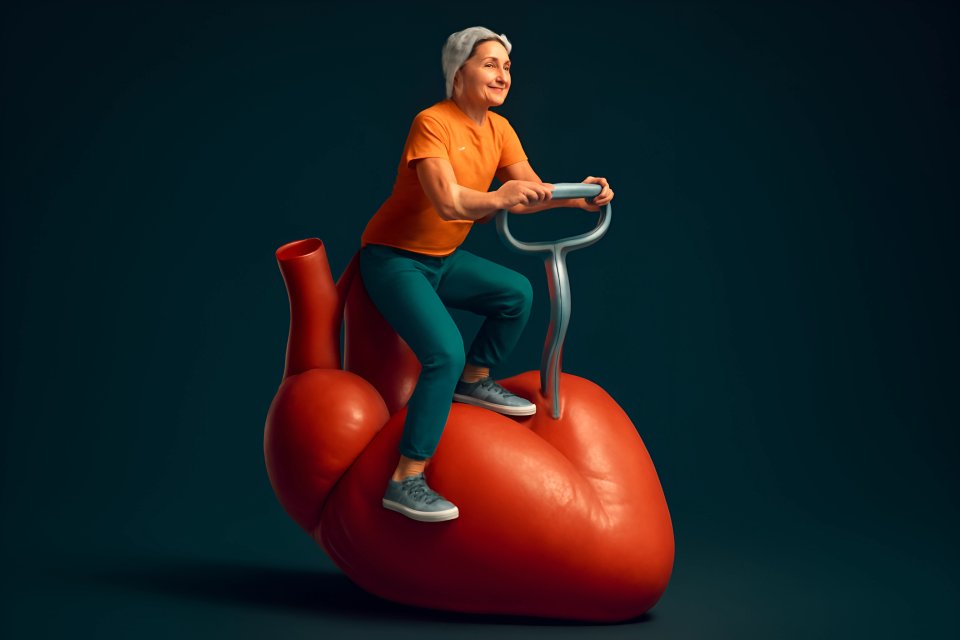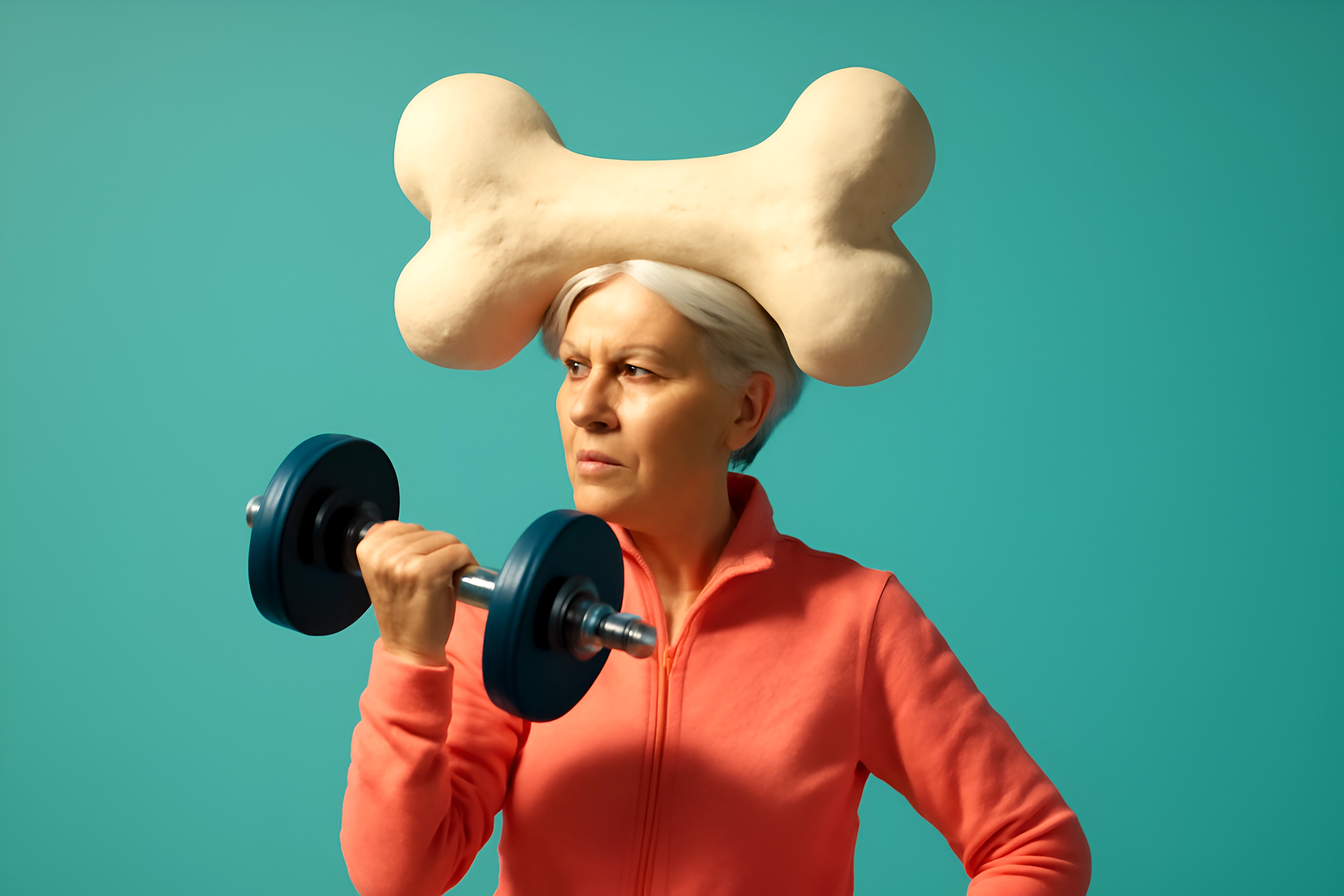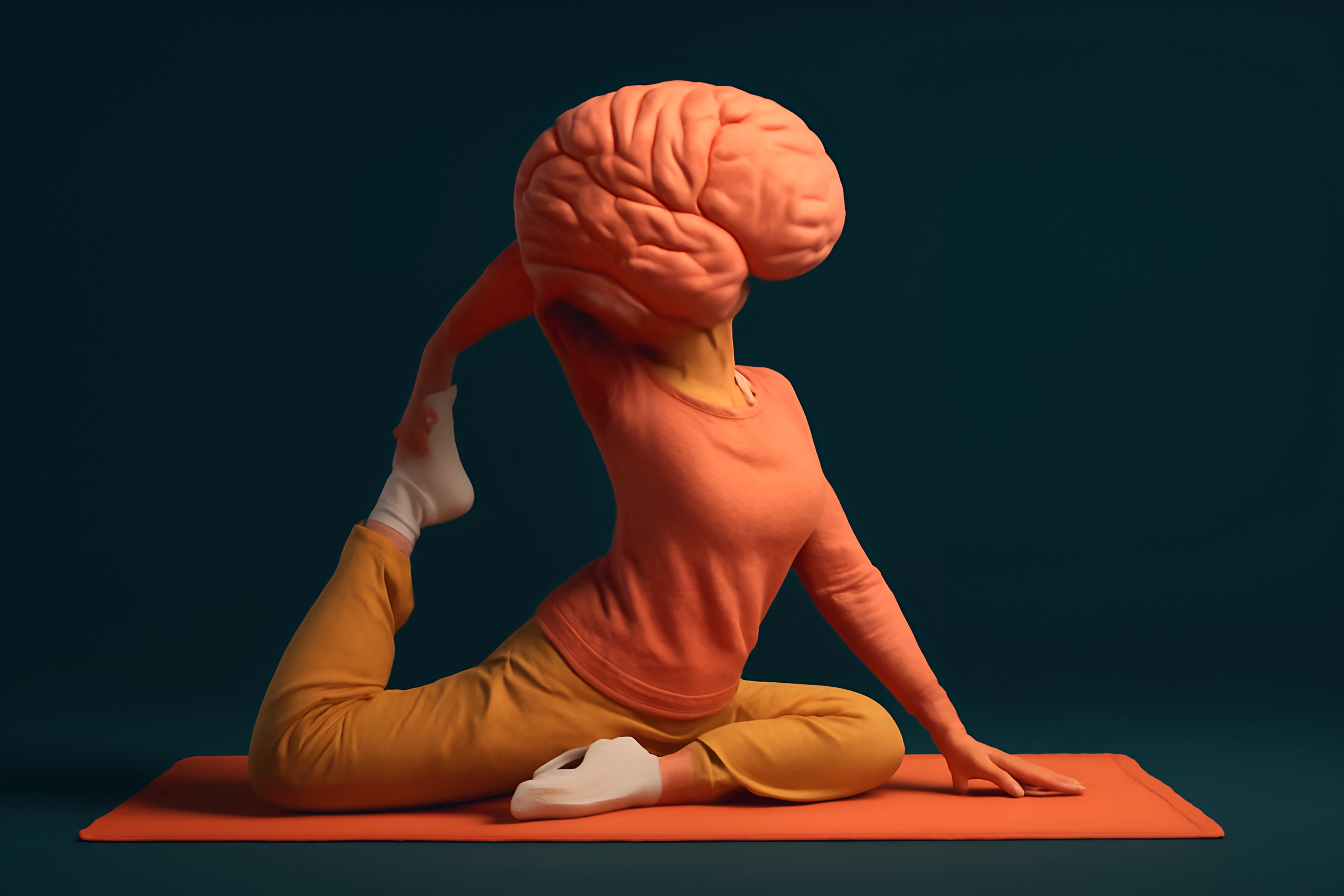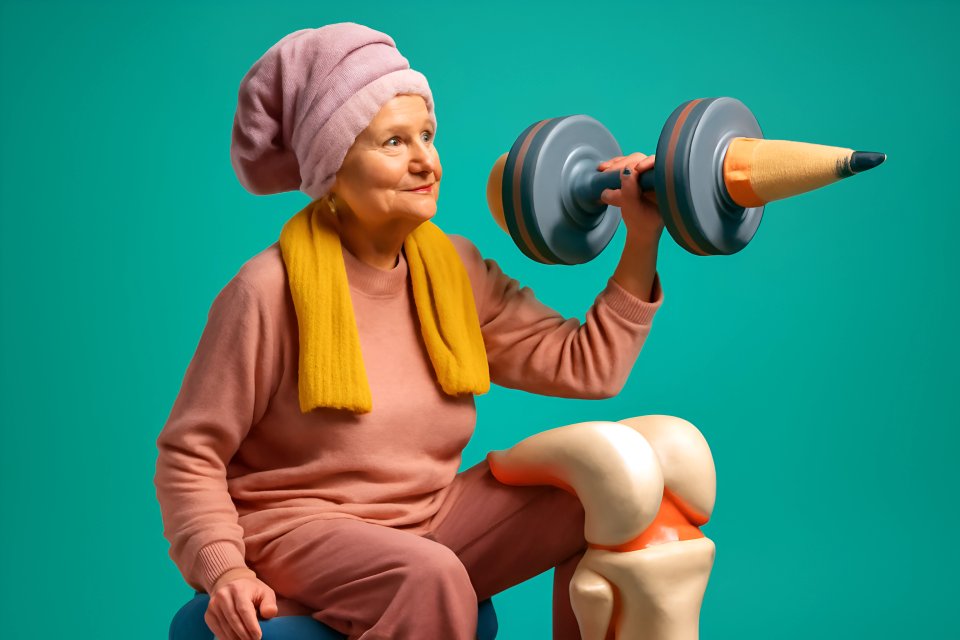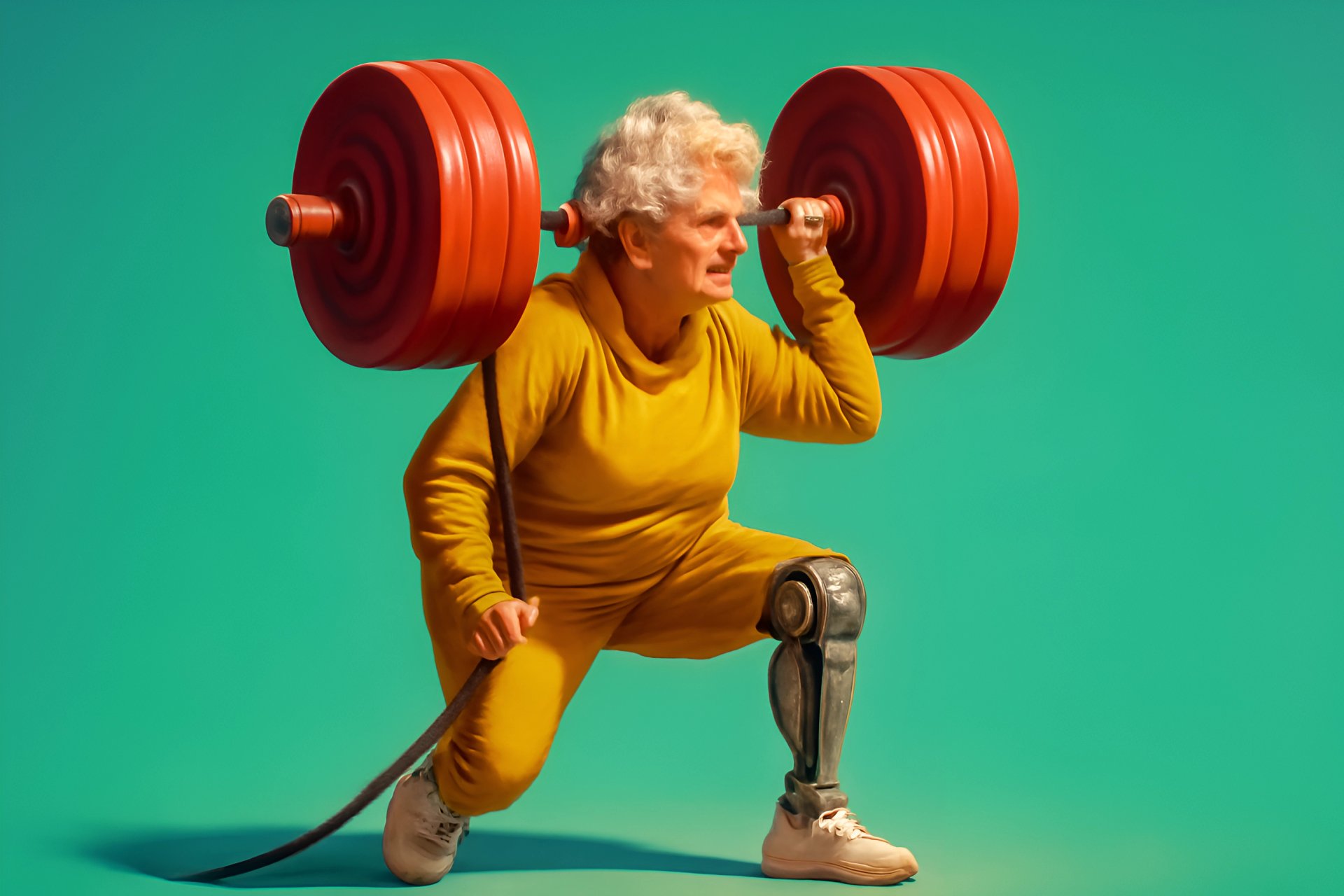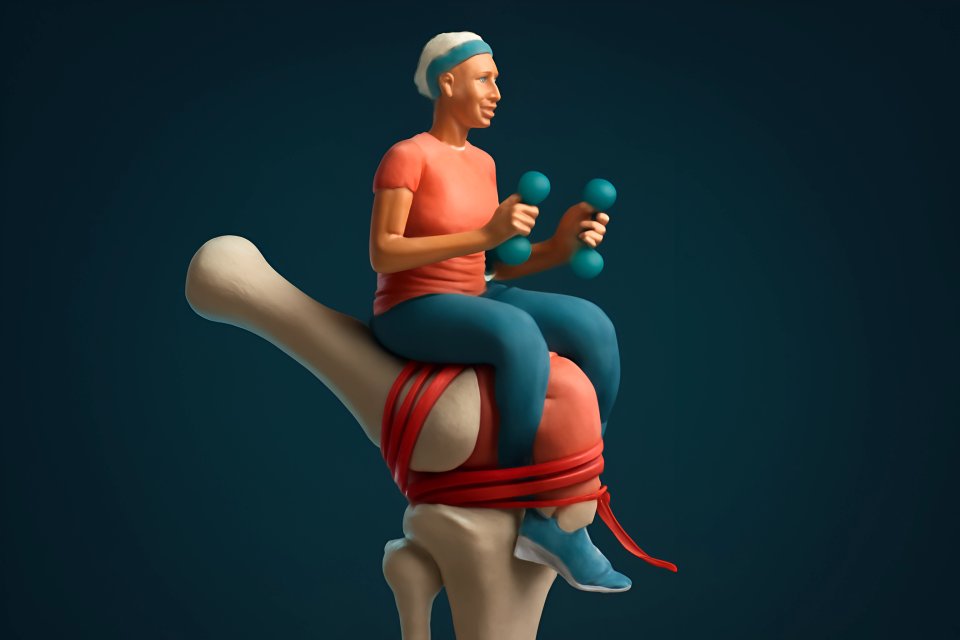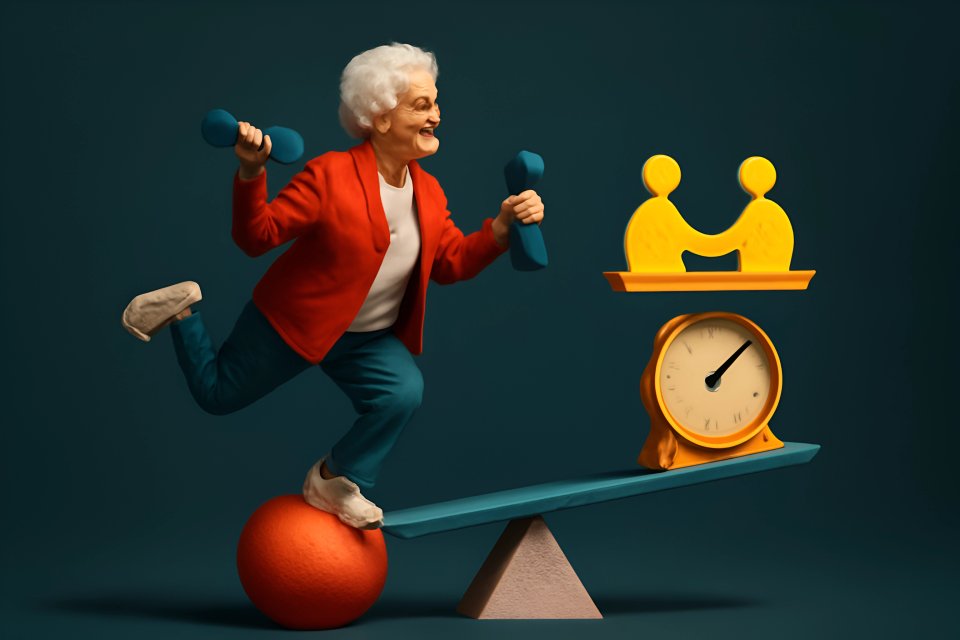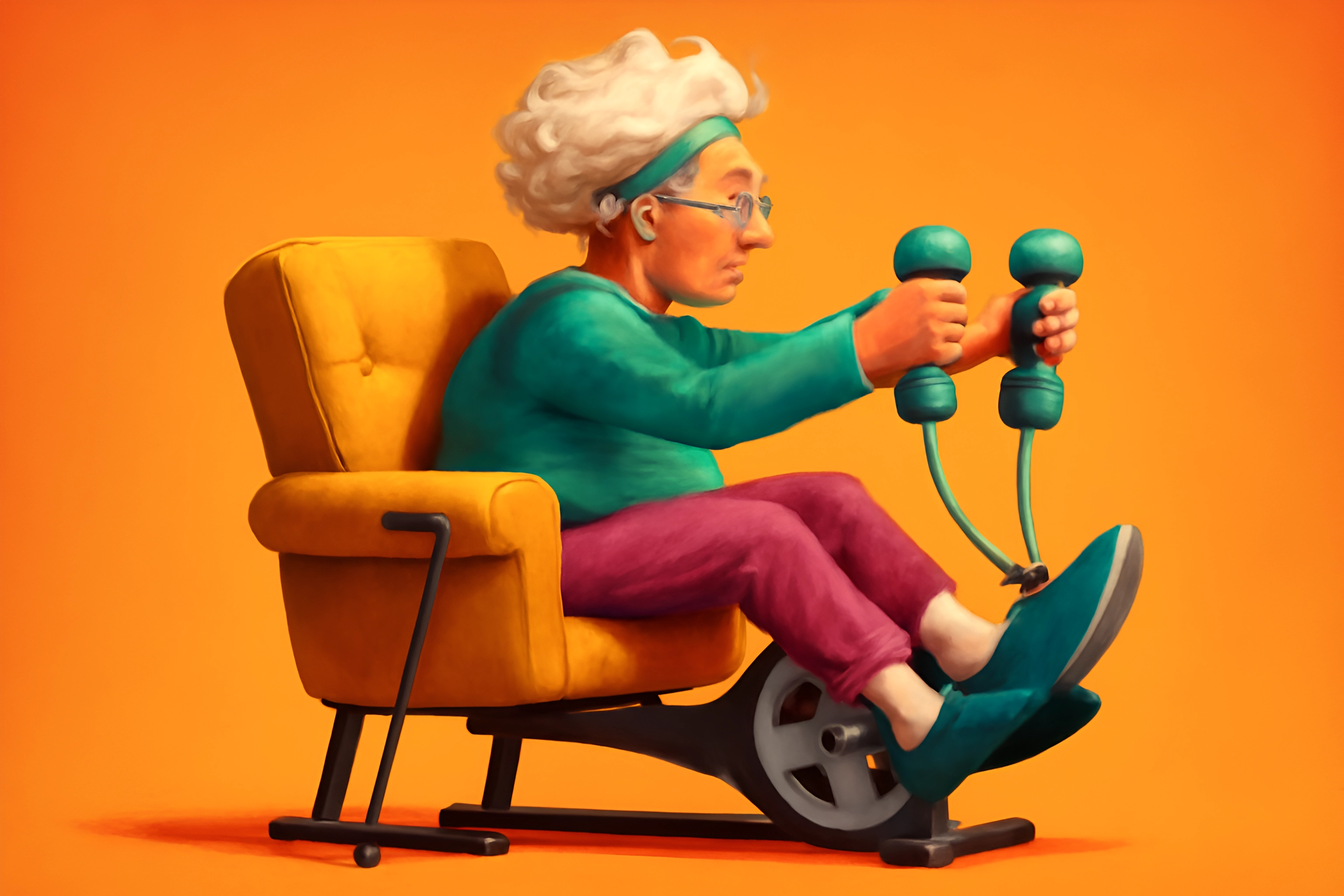
Does the thought of exercise feel like a distant memory, something that belongs to a younger, more agile version of yourself? If stiff joints, a fear of falling, or a simple lack of energy have built a wall between you and an active life, you are not alone. It can feel like your own body is holding you hostage, limiting your freedom and chipping away at your independence.
But here’s the truth: that wall is not as solid as it seems. Limited mobility is not a life sentence of inactivity. It is simply a new set of rules for the game, and today, you are going to learn how to win.
This is not another list of impossible exercises that leave you feeling defeated. This is your personal guide to reclaiming your strength, one gentle, safe, and effective movement at a time. We will walk you through a complete routine you can do from the comfort of your favorite chair and teach you how to build your very own modified fitness plan that puts you back in control.
Why Movement is Your Best Medicine, Especially with Limited Mobility
Let's be brutally honest. The fear that comes with limited mobility is real. It’s the fear of a fall that could change everything, the fear of not being able to get up from a low chair, the fear of losing the very independence you’ve cherished your entire life. But staying still is the surest way to make those fears a reality. Movement, even the gentlest kind, is your most powerful weapon against them.
Think of exercise as a direct investment in your freedom. Each gentle stretch and controlled lift is another deposit into your bank of strength and stability. According to the National Institute on Aging, staying physically active can significantly lower your risk of falls and fall-related injuries. It’s not just about adding years to your life; it’s about adding life, vitality, and confidence to your years.
Imagine easily carrying your own groceries, playing on the floor with your grandchildren, or simply navigating your home with newfound confidence. This isn't a fantasy. It is the direct result of committing to a gentle, consistent routine that respects your body’s limits while steadily expanding them.
- Maintain Independence: Build the strength you need for daily activities, from opening a stubborn jar to getting out of bed with ease.
- Enhance Balance & Reduce Fall Risk: Strengthen the core and leg muscles that act as your body’s natural stabilizers.
- Ease Joint Pain and Stiffness: As detailed in many guides on low-impact exercises for seniors, gentle movement acts like oil for your joints, improving circulation and reducing arthritis-related discomfort.
- Boost Mood and Mental Clarity: Physical activity is a proven mood-booster, releasing endorphins that fight off feelings of anxiety and depression.
- Improve Circulation and Heart Health: Even seated cardio gets your blood pumping, which is essential for a healthy heart and brain.
The Golden Rules: Your Safety-First Checklist
Before you move a single muscle, we need to talk about the most important rule of all: safety. Your well-being is non-negotiable. Following these simple guidelines will build a secure foundation for your fitness journey, ensuring every movement helps you, never harms you.
Listen to your body. It is the ultimate expert on what you can and cannot do. We are throwing out the old "no pain, no gain" mantra. Your new rule is no pain, no pain. You should feel your muscles working, a gentle stretch, or a slight increase in your heart rate—but you should never feel sharp, stabbing, or sudden pain.
Most importantly, this guide is for informational purposes and not a substitute for professional medical advice. Always speak with your doctor or a physical therapist before beginning any new exercise program. They can help you understand your specific limitations and give you the green light to proceed with confidence.
- Consult Your Doctor: Get professional clearance to ensure you’re ready for a new fitness routine.
- Use a Sturdy Chair: Your chair is your primary piece of equipment. Choose one that is solid, armless, and has no wheels.
- Clear Your Space: Remove any tripping hazards like area rugs, electrical cords, or clutter from your workout area.
- Listen to Your Body: Stop immediately if you feel any sharp pain. Gentle effort is the goal, not strain.
- Wear Comfortable Clothing & Supportive Shoes: Proper footwear provides stability, even when you are seated.
- Stay Hydrated: Keep a glass of water within arm's reach and sip it throughout your routine.
The Complete Low-Impact Home Workout Routine
Ready to begin? This routine is designed to be a complete, balanced workout that you can do right at home. It covers everything from warming up your muscles to building strength and cooling down safely.
Part 1: The Gentle Warm-Up (5 Minutes)
Never skip your warm-up. These first few minutes are crucial for waking up your muscles and lubricating your joints, which dramatically reduces your risk of injury. Think of it as telling your body, "Okay, we're about to move now."
Start by sitting tall in your chair, with your feet flat on the floor. Take a deep breath in and let it out slowly. Let’s begin.
- Exercise 1: Seated Neck Stretches: Slowly turn your head to look over your right shoulder, hold for 15 seconds. Return to center and repeat on the left side. Then, gently tilt your right ear toward your right shoulder, hold for 15 seconds, and repeat on the left.
- Exercise 2: Shoulder Rolls: Inhale and lift your shoulders up toward your ears. Exhale and roll them back and down. Repeat 5 times, then reverse the direction for 5 forward rolls.
- Exercise 3: Ankle Circles: Extend your right leg slightly and draw circles with your toes. Do 10 circles in one direction, then 10 in the other. Switch to the left foot and repeat.
Part 2: Seated Strength & Cardio Exercises
This is the heart of your workout. From the safety of your chair, you can effectively build muscle and get your heart rate up. As recommended by experts at CareIndeed, these seated movements are perfect for improving muscle tone and cardiovascular health without putting stress on your joints.
Remember to breathe deeply and move with control. The goal is quality over quantity. Focus on feeling the correct muscles engage with each repetition.
- Exercise 1: Seated Marching: While sitting tall, lift your right knee toward your chest, then lower it. As your right foot touches the floor, lift your left knee. Continue alternating for 30-60 seconds to get your heart rate up.
- Exercise 2: Seated Leg Extensions: Sit tall and hold the sides of the chair. Extend your right leg straight out in front of you, squeezing your thigh muscle. Hold for a second, then slowly lower it. Do 8-12 repetitions, then switch to the left leg.
- Exercise 3: Seated Bicep Curls: With your arms at your sides, make a fist. Bend your elbows and bring your fists toward your shoulders, squeezing your bicep muscles. Lower with control. For more challenge, hold water bottles or light soup cans. Do 8-12 repetitions.
- Exercise 4: Seated Overhead Press: Start with your hands at shoulder height, palms facing forward. Press both hands up toward the ceiling without locking your elbows. Slowly lower them back to the starting position. Do 8-12 repetitions.
Part 3: Supported Standing Exercises (Optional, for those who can)
If you feel stable enough to stand, these exercises are game-changers for functional strength. SAFETY FIRST: You must hold onto a sturdy chair, countertop, or wall for support at all times during these movements. Do not attempt them if you feel dizzy or unsteady.
These exercises build the critical muscles needed for balance and everyday activities. The sit-to-stand, in particular, is considered one of the most important exercises for maintaining independence.
- Exercise 1: Sit-to-Stands (Chair Squats): Sit at the front edge of your chair, feet flat and hip-width apart. Holding your support, push through your heels to stand up completely. Slowly and with control, lower yourself back down to the chair. Do 5-10 repetitions.
- Exercise 2: Standing Side Leg Raises: Stand tall, holding your support. Keeping your back straight, slowly lift your right leg out to the side as far as is comfortable. Lower it with control. Do 8-12 repetitions, then switch to the left leg.
- Exercise 3: Countertop Push-ups: Stand facing a kitchen counter or a sturdy wall. Place your hands on the surface, slightly wider than your shoulders. Step back so your body is at an angle. Bend your elbows to lower your chest toward the counter, then push back to the start. Do 5-10 repetitions.
Part 4: The Essential Cool-Down & Stretch (5 Minutes)
You did it! Now it’s time to thank your body with a gentle cool-down. This final step helps improve your flexibility, reduces muscle soreness, and allows your heart rate to return to normal gradually.
Never rush the cool-down. These stretches are your reward for the hard work you just put in. Breathe deeply into each stretch and feel the tension melt away.
- Exercise 1: Seated Hamstring Stretch: Sit at the edge of your chair and extend your right leg straight, with your heel on the floor. Keeping your back straight, gently lean forward until you feel a stretch in the back of your thigh. Hold for 20-30 seconds and switch legs.
- Exercise 2: Seated Torso Twist: Sit tall with your feet flat on the floor. Gently twist your upper body to the right, using your hands on the chair for a light assist. Look over your right shoulder and hold for 20-30 seconds. Repeat on the left side.
- Exercise 3: Full Body Reach: Interlace your fingers and push your palms toward the ceiling, reaching as high as you can for a full-body stretch. Hold for 15 seconds, breathing deeply.
How to Create Your Own Customized 'Modified Fitness Plan'
A workout is only effective if you do it consistently. The secret to consistency is creating a plan that works for you. You are in the driver's seat, and your goal is to build a sustainable habit, not to burn yourself out.
Start small—so small it feels almost too easy. The initial goal is just to show up. You can gradually increase the challenge as you get stronger, a principle that is key to the success of many safe and low-impact workouts for older adults.
Your progression plan is simple. Begin with 8 repetitions of each strength exercise. Once you can complete all 8 with good form, increase to 10. When 10 feels manageable, move up to 12. Only then should you consider adding light resistance, like using a resistance band or holding small water bottles. This gradual approach ensures you build strength safely and effectively.
| Day | Activity | Duration |
|---|---|---|
| Monday | Workout Routine | 15 Minutes |
| Tuesday | Rest or Gentle Stretching | 10 Minutes |
| Wednesday | Workout Routine | 15 Minutes |
| Thursday | Rest | - |
| Friday | Workout Routine | 15 Minutes |
| Saturday | Active Rest (e.g., short, safe walk) | 10-15 Minutes |
| Sunday | Rest | - |
Conclusion: Your Journey to Renewed Vitality Starts Today
Remember that feeling of being trapped by your body? It’s time to leave it behind. You now have the knowledge and the tools to start knocking down that wall, one gentle movement at a time. You’ve learned that movement is possible regardless of your mobility, that safety is your top priority, and that starting small is the secret to long-term success.
Limited mobility doesn't define you. Your strength, your resilience, and your determination do. The person you want to be—stronger, more confident, more independent—is not out of reach. They are waiting for you to take this first, simple step.
Take that step today. Your future self will thank you for it.
Call to Action
What is one small movement you can commit to trying this week? Share your goal in the comments below to inspire our community!
Want more tips on staying active and healthy after 50? Sign up for the FitOverFifty newsletter and get expert advice delivered straight to your inbox.
For more ideas on improving your flexibility and joint health, check out our Step-by-Step Home Mobility Routine to Improve Joint Health for Seniors.





